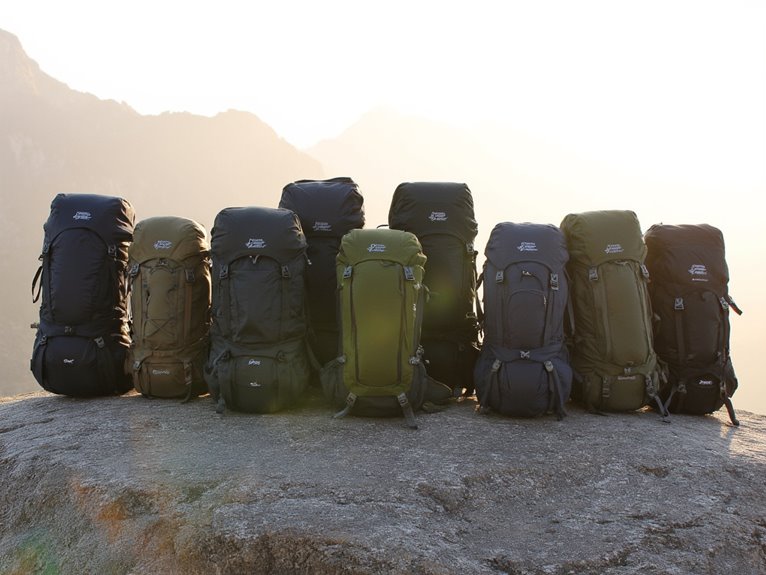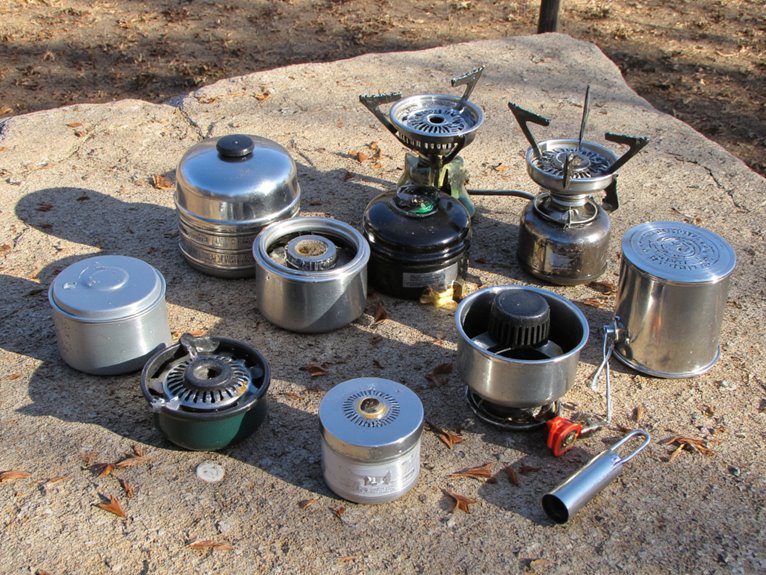How to Dress for Bike Touring?
For a comfortable and enjoyable bike touring experience, dress in layers that balance comfort, durability, and moisture management. Choose breathable, quick-drying fabrics like merino wool or synthetic blends for your base layers, and consider a mid-layer for cold weather insulation. A waterproof and breathable jacket provides the final defense against the elements. Don't forget to prioritize comfort and support in your bike shorts, legwear, and footwear. Accessories like helmet mirrors, cycling gloves, and reflective gear can further augment your ride. By making informed choices, you'll be well-equipped to tackle any terrain – and there's more to discover to optimize your bike touring wardrobe.
We are supported by our audience. When you purchase through links on our site, we may earn an affiliate commission, at no extra cost for you. Learn more. Last update on 28th December 2025 / Images from Amazon Product Advertising API.
Choosing the Right Fabric
For bike touring, selecting fabrics that balance comfort, durability, and moisture management is vital to guarantee a comfortable and enjoyable ride.
Fabrics should be breathable, allowing for airflow and moisture evaporation to prevent clamminess and discomfort.
Natural fibers like merino wool and bamboo are excellent choices, as they offer excellent moisture-wicking properties and temperature regulation.
Synthetic fabrics like polyester and nylon can also be suitable, provided they are designed with moisture management in mind.
Avoid cotton, as it tends to retain moisture and can lead to discomfort.
When choosing fabrics, consider the ride duration, weather conditions, and personal comfort preferences to achieve peak performance and comfort.
Base Layers for Bike Touring
In the context of bike touring, a well-chosen base layer is essential for maintaining comfort and performance, as it serves as the foundation of your layering system.
A high-quality base layer should provide moisture-wicking properties to keep you dry and comfortable during extended periods of cycling.
Look for fabrics with breathable, quick-drying properties, such as merino wool or synthetic blends. A slim fit and seamless construction can reduce chafing and irritation.
Consider a base layer with a high collar to protect your neck from the sun and wind.
Ultimately, a well-designed base layer will help regulate your body temperature, reducing fatigue and discomfort during your bike tour.
Mid-Layers for Cold Weather
When cycling in cold weather, a well-chosen mid-layer provides essential thermal insulation, trapping warm air close to the body while allowing moisture to escape.
This layer should be breathable, moisture-wicking, and quick-drying to prevent overheating and discomfort.
Fleece jackets or sweaters made from synthetic or merino wool are excellent mid-layer options.
They provide excellent thermal insulation while allowing moisture to escape, preventing chilling.
Look for mid-layers with a DWR (durable water repellent) finish to help protect against wind and precipitation.
When selecting a mid-layer, consider the temperature range you expect to encounter and choose a garment that provides the right level of insulation for your needs.
Waterproof and Breathable Jackets
A waterproof and breathable jacket is the outer layer that provides the final defense against the elements, shielding you from wind-driven rain, sleet, or snow while allowing moisture to escape, thereby preventing chilling and discomfort.
This essential piece of gear guarantees you stay dry and comfortable during inclement weather conditions.
Look for a jacket with a waterproof and breathable membrane, such as Gore-Tex or eVent, and a durable water repellent (DWR) finish to protect against wind and precipitation.
A adjustable cuffs, hem, and hood will help prevent water entry, while pit zips or ventilation systems facilitate airflow and moisture management.
Choose a jacket with a relaxed fit to accommodate layering underneath, and consider features like reflective strips or bright colors for improved visibility.
Bike Shorts and Legwear
Every bike tourer needs a good pair of bike shorts and legwear to provide comfort, support, and protection during long hours in the saddle. A well-designed pair of bike shorts can make a significant difference in the overall comfort and enjoyment of your ride.
When selecting bike shorts and legwear, consider the following key factors:
- Look for moisture-wicking, breathable fabrics that will keep you dry and comfortable.
- Choose shorts with a padded crotch and a comfortable, ergonomic design.
- Consider legwear with built-in UPF protection to shield your skin from the sun.
Footwear for Bike Touring
Proper footwear is a crucial component of a bike touring ensemble, as it directly impacts pedaling efficiency, comfort, and overall performance.
When selecting footwear for bike touring, prioritize comfort, support, and breathability. Look for shoes with stiff soles to efficiently transfer power to the pedals.
A snug fit with adjustable lacing or straps guarantees a secure connection to the pedal. Breathable materials, such as mesh panels, help keep feet cool and dry.
Additionally, consider shoes with a waterproof or water-resistant treatment to protect against inclement weather. Furthermore, opt for shoes with a recessed cleat design to prevent damage to the pedal or shoe.
Accessories for Comfort and Safety
Beyond the essentials of clothing and footwear, a few carefully chosen accessories can significantly improve comfort and safety while bike touring. These additions can make a substantial difference in your overall riding experience.
Some key accessories to examine include:
- Helmet mirrors: Allow for increased visibility and awareness of your surroundings.
- Cycling gloves: Provide grip, protection, and comfort for your hands.
- Reflective gear: Boost visibility in low-light conditions, increasing safety on the road.


